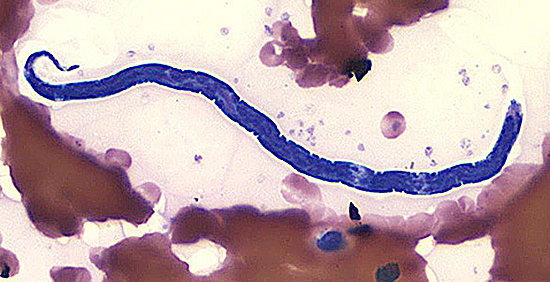
Parasites may not be popular, but they are successful. Every organism has at least one parasite that thrives on it - or in it. They make up the majority of species on the planet and can be animals, crustaceans, insects, bacteria or plants, and some parasites even have parasites of their own. There 10 are the weirdest, and that’s a tough title to claim.
10. Naegleria fowleri
Viewed through a microscope, this amoeba looks like an evil clown dreamed up by Stephen King on mescaline. It’s sometimes referred to as the brain eating amoeba, which does nothing to enhance its lovability.
It’s found in freshwater rivers and lakes, and it infects swimmers by entering the nose and traveling to the brain. Although millions of people are exposed to the amoeba each year, only a few of them ever get sick. But those that do soon find themselves in serious trouble - within days of exposure they’ll be suffering from fever, seizures, loss of balance and hallucinations. By this stage it is already too late for effective treatment, and death will typically follow. So never let anything into your nose, ever.
9. Cymothoa exigua
This nightmare inducing parasite belongs to the same family as lobsters and crabs. Having found a suitable victim, most often a red snapper, the parasite makes itself at home in the fish’s gills until it reaches maturity. This is bad news for the host, as the little beastie then makes its way to the snapper’s mouth, where it bites into the tongue and drains it of blood. The tongue withers and dies, leaving the parasite in its place. It doesn’t make for a pretty sight, but the host fish doesn’t seem to be too inconvenienced by the presence of their unwanted guest. The Cymothoa exigua is unique in being the only organism known to replace an entire organ on their host.
Thankfully they’re not harmful to humans outside of a weird horror movie about them, although they can bite if handled while alive. The fish they co-exist with are eaten by humans, so every now and then they end up on somebody’s dinner plate. We wouldn’t recommend eating them.
8. Cochliomyia
Also known as the screw-worm fly, this unpleasant character most often infects livestock and pets. However, they do infect humans from time to time, so there’s always an outside chance that you’ll be treated to a personal encounter. Their modus operandi is for an adult fly to lay its larvae in an open wound. The larvae hatch into maggots, which soon begin their business of chewing into the host’s flesh. Most species of maggot will only eat dead flesh, which is why they can be so useful in medicine. But the screw-worm has no such scruples - it will chomp right through previously healthy flesh, causing horrible wounds.
To make things even more terrifying, the maggots have toxic saliva that causes infections and produces foul smelling puss. Left untreated, the host will sicken and often die. This is of no concern to the screw-worm, which by this time will have grown into a rather sinister looking adult fly and be off looking to perpetuate the gruesome cycle. Where’s the horror movie about these monsters?
7. Toxoplasma gondii
Up to a third of the planet’s human population may be infected by this single celled parasite, although as a healthy immune system is able to keep it in check, most of those afflicted will have no serious issues.
The outlook for an infected mouse isn’t so hot. The parasite not only removes a rodents’ natural fear of cats, but actually triggers a fatal attraction towards all things feline. Incredibly, it’s able to alter the brain structure of its rodent host and compel it to all but serve itself up on a platter for the local neighbourhood tom. This is bad news for the mouse but great news for the parasite, which is only capable of reproducing in a cat’s guts. There are actually several examples of parasites that are able to modify their host’s behaviour, although none of the others are looking to get laid in a cat’s large intestine. Just be thankful that we don’t have that extra step in our reproductive cycle.
6. Filarial Worms
These tiny parasites are spread by mosquito bites and affect 120 million people in tropical and subtropical climates. These human specific parasites are only able to survive in our lymph system, but while the majority of those infected will never develop clinical symptoms, a few aren’t so fortunate.
Although the worms are microscopic, they can do horrendous damage. Typical symptoms include horrific swelling of the limbs and testicles. The condition, often referred to as elephantiasis, is painful, debilitating and highly visible.
5. Megalomyrmex symmetochus
Megalomyrmex are a species of South American ant with a tough-guy attitude. Considered a social parasite like your friend who keeps crashing on your couch and eating all your food, megalomyrmex infiltrate entire colonies rather than individuals.
Their targets are a peaceful fungus farming species of ants called Sericomyrmex amabilis. The megalomyrmex are built for battle and usually have little difficulty in killing their way inside and taking over. The s. amabilis’ queen’s wings are clipped, and she suffers the indignity of being forced to undertake the tasks of a common worker. Meanwhile, the Megalomyrmex eat their host’s food and live the high life, in so far as that’s possible for ants, while their hosts do the bulk of the work.
This all sounds like something of a raw deal for the host colony. However, the presence of their ill-mannered guests does bring benefits. A third species of ant, the aggressive Gnamptogenys hartmani, will attack and usurp colonies of the s. amabilis. The latter make for poor soldiers, with their battlefield tactics consisting mostly of running away or pretending to be dead. The megalomyrmex aren’t such easy foes to subdue, and they fight back fiercely. The parasitic ants even have a chemical weapon in the form of a venom which they can disperse in aerosol form. This confuses the attacker’s ability to determine friend from foe, causing the invading army to lose cohesion and even attack each other. Even the presence of a few megalomyrmex can be enough to turn the tide of battle, so if they’re going to be around you might as well have them on your side.
4. Loa loa
Endemic in some parts of Africa, the Loa loa gets into its human hosts through the bites of mango flies. The bite itself hurts, as the fly rips through skin to get to the blood, but the parasite itself is even worse. The worm, which can grow up to 20 cm long, causes intense pain by wriggling around under the skin. Disturbingly, they can sometimes be seen migrating through the white portion of the eye, hence the nickname eye worm.
Symptoms include itching, swellings, fatigue, joint pain, kidney disease and retina damage. The worm can be removed through surgery, but their larvae may still remain in the blood.
3. Cuscuta
Like something out of Day of the Triffids, the Cuscuta, also known as the dodder, is a parasitic plant that feeds on other plants. Having no chlorophyll, it cannot make its own food and relies entirely on its host for survival. The plant bears a striking resemblance to spaghetti, and once it sprouts from the ground it begins to search around for a suitable host. If it fails to accomplish this within a few days it will die, which it a pretty tough task to be assigned at birth. Assuming it’s successful, the dodder detaches itself from the ground and winds itself around the host’s stem. Surviving by drawing nutrients from the host, the dodder is even capable of moving from plant to plant and letting them handle the bothersome business of photosynthesis.
2. Taenia solium
This tapeworm is a well-known parasite that typically makes itself at home in the intestines of humans and other mammals. What many people don’t know is that it’s also possible for the tapeworm larvae to invade our brains.
A person can only get tapeworms through eating infected and under-cooked meat. If this happens the tapeworm will set up base in the intestines and get busy laying thousands of eggs, which are excreted in faeces. Any eggs that find their way back into a pig will complete its life cycle and hatch into a tapeworm. Sometimes, particularly in areas of the world with poor sanitation, the eggs will be consumed by a human. In this case the parasite won’t die, but neither will it be able to develop beyond its larval form.
Typically the larvae will become lodged in the brain, where it produces a chemical that prevents the body’s immune system from detecting its presence. In the short term this usually isn’t disastrous, and an infected person might go for years without complications or even an inkling that their brain has been invaded. However, when the larvae finally die they stop producing their stealth chemical. The body’s defences go on the attack, and this causes the brain to swell. The result is devastating - seizures, paralysis, loss of speech and even death may follow. This particular form of the parasite is disturbingly widespread, and the World Health Organization estimates that as many as fifty million people worldwide may be affected.
1. Hymenoepimecis argyraphaga
Plesiometa argyra is a species of spider that can be found in Costa Rica, where it spends its days hanging out on its web, snacking on insects and doing other spider stuff. But one particular insect, a parasitic wasp known as Hymenoepimecis argyraphaga, has the ability to turn the tables in a disturbing fashion.
The wasp stings the spider and paralyzes it so she can lay an egg on its abdomen. The spider soon recovers, but its troubles are only just beginning. The wasp larvae feeds on spider blood as the unsuspecting host goes about its business. After a few weeks the larvae needs a cocoon in a nice safe place, and the spider is going to provide it. The larvae injects a chemical into the spider, which alters its behaviour in a very specific way. It begins to build a web unlike any it’s built before - a small, heavily reinforced web that will hold the weight of a cocoon. With the work completed the wasp larvae kills the spider, sucks out any remaining juicy bits, and settles into a cocoon in the centre of its custom built web. Soon it will hatch, and the gruesome process begins all over again. Isn’t nature beautiful?
Top image: Loa loa. Credit: CDC-DPDx/Wikimedia Commons.
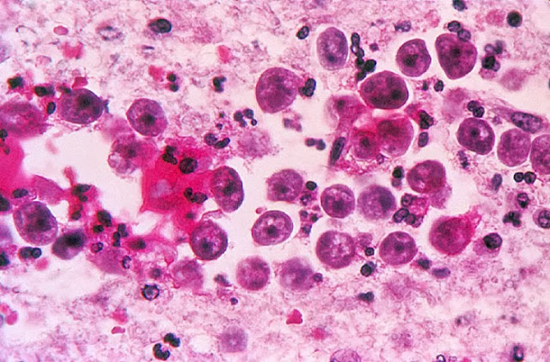
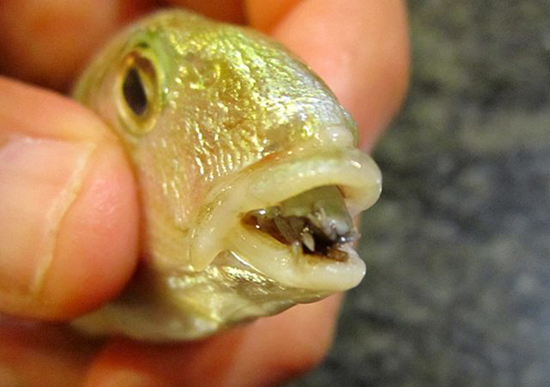


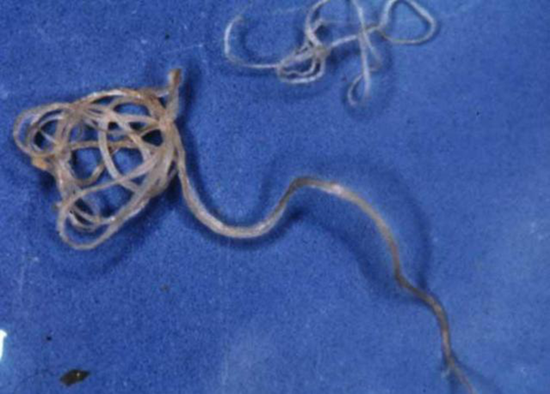
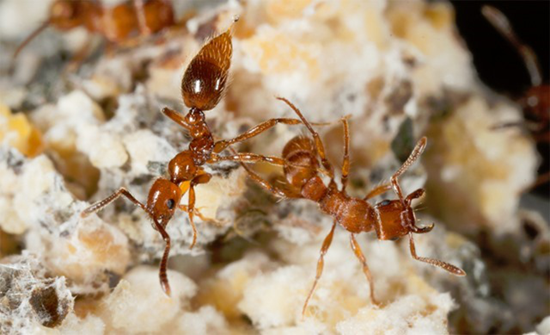
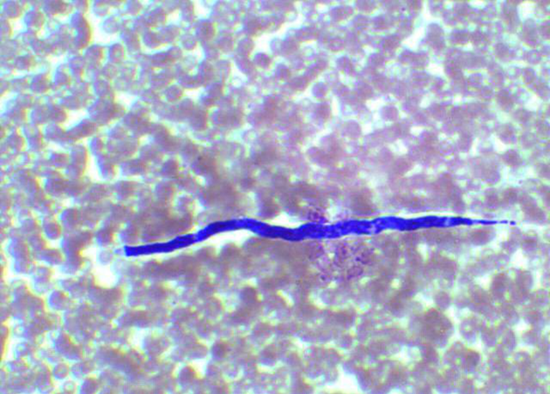

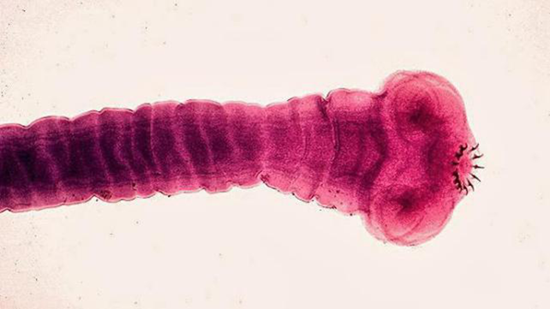
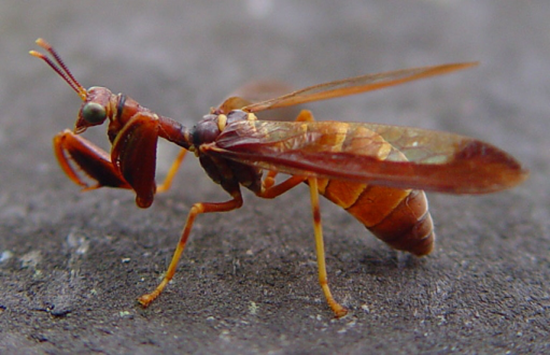
No comments:
Post a Comment
Please adhere to proper blog etiquette when posting your comments. This blog owner will exercise his absolution discretion in allowing or rejecting any comments that are deemed seditious, defamatory, libelous, racist, vulgar, insulting, and other remarks that exhibit similar characteristics. If you insist on using anonymous comments, please write your name or other IDs at the end of your message.